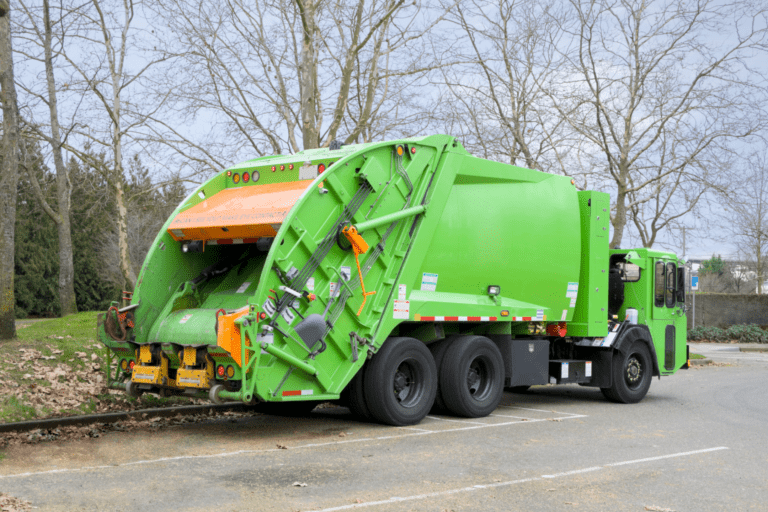Canada is set to follow in the footsteps of the US by mandating Electronic Logging Devices for professional truck drivers, but the timeline for Canada’s ELD mandate has been extended yet again.
While the original mandate was set to come into force in June 2022, it has been pushed out through a 12-month extension of “progressive enforcement.” Currently, full enforcement of the Canada ELD mandate will begin January 2023. This extension has been necessary due to COVID-related delays and potential ELD providers being slow to self certify their products with Transport Canada. There are also four provinces—British Columbia, Quebec, Nova Scotia, and Newfoundland—that have yet to introduce the regulations or legislation requiring ELDs.
What is the Canadian ELD mandate?
ELD compliance in Canada has been in the works for a number of years—the directive was adopted in 2019 and the effective date set for June 2022. As in the US, the new Canadian E Log rules require professional truck drivers who record Hours of Service to move from paper logbooks to Electronic Logging Devices.
The Canadian ELD mandate doesn’t change the existing HOS rules, rather it specifies that drivers use electronic logging versus paper-based tracking.
Why was the Canadian ELD mandate delayed?
The extension has been a welcome reprieve for many carriers who are still looking to find the right solution. The Private Motor Truck Council of Canada is also in favor of the delay.
“While we have always been in full support of the ELD regulation, the continued issues with a lack of approved devices have continued to plague the mandate,” PMTC President Mike Millian said in a press release. “And although we now have 22 approved, industry has not been provided enough of a runway to select a device of their choice and implement it into their fleet in time for the June 12 deadline.”
Other issues delaying the full enforcement process revolve around the integration and communication of the information between the devices and enforcement.
“The industry is still waiting for Transport Canada (the federal agency in charge of trucking) to announce a vendor and system that allows ELD data to be transferred securely from the device to enforcement personnel, as well as enforcement protocols, training, and how the regulation will be enforced uniformly between jurisdictions,” Millian said.
“This final delay provides enough time for industry to select a new approved device, or transition from their current device, in time to comply with the mandate, as well as provide enough time for regulators to address some of the issues mentioned,” he continued.
The compliance gap ELDs don’t fill
However, as has been seen in the US since its mandate in 2017, many ELD solutions have offered up an “eDVIR” solution as part of the compliance suite tied into the ELD. On the face of it, this seems like a logical step to tick a few more compliance boxes for carriers, digitizing another process and advancing the safety and compliance aspirations of their business from one central device that lives in the cab.
However, ELDs have several flaws that more often than not do not make them an ideal DVIR tool, particularly for companies who have high standards of safety. DVIR is part of broader vehicle maintenance compliance regulations, covering systematic repair and maintenance of your fleet, record retention and reporting expectations. Just focussing on DVIR will not cover your compliance position. A more comprehensive maintenance management platform will enable end to end compliance more effectively.
When it comes to DVIR, the hardware-reliant DVIR offered by most ELD providers is by nature connected to the vehicle’s engine, providing the accuracy of the information on hours of service to law enforcement, however, this connection prevents drivers from having accountability around their daily inspection processes. Many drivers are simply prompted to tick a yes/no box to state if the vehicle has any safety-related defects and then they are on the road. This leaves an obvious gap in accountability and scrutiny for management responsible for the compliance score of a business.
DVIR is a specific process and a critical leg of the maintenance stool. Even with the best preventative maintenance program, issues happen on the road that are unexpected and outside the regular PM intervals of mechanic oversight.
What you should look for in an eDVIR
Carriers rely on their drivers to not only conduct these inspections thoroughly, but note defects and communicate these when they are found so that businesses can arrange repairs or gain comfort that trucks are still roadworthy, most ELD solutions don’t provide the opportunity for this exchange of information.
What you should look for in an eDVIR/vehicle maintenance compliance solution:
- DVIR should be part of a full end to end maintenance management solution
- Mobile app to capture defects outside the cab
- Photo taking capability to provide rich information to mechanics
- Real time alerts & notification
- Required ‘three signatures’ of driver, mechanics and reviewing driver as per regulations
- Ability to present historical DVIRs to enforcement on request
- Driver and vehicle leader boards and exception reporting to identify when DVIRs have not been completed
Stay ahead of safety and compliance issues
In the integrated transport technology stack there is an option presenting the best of both worlds: pair your ELD solution with dedicated vehicle inspection and maintenance software like Whip Around.
Whip Around has been designed to meet all DVIR regulations and more. Whip Around enables drivers to add comments to reports, follow customer workflows, take photos, and engage with mechanics or management around defects and issues, so you can have eyes on your fleet at all times.
The best part? It integrates with the leading telematics and ELD providers so you can connect the systems to sync vehicle data, manage DTC fault codes from your telematics system in the Whip Around maintenance management system with your mechanics and vendors, and send completion notifications back into your ELD.
Drivers can bring up DVIR history for the truck they are driving without fumbling for paper inspection forms, and they can also show enforcement what defects are being addressed if they are noted on the roadside.
The increased mitigation against liability, with photographic evidence and chain of responsibility on repairs and maintenance with time and date-stamped work orders and updates, builds a foundation of compliance you can rely on.
The power of two dedicated systems working together gives you the best of both worlds, and comfort that you are staying ahead of safety and compliance issues. Whip Around integrates with leading telematics and ELD providers like Samsara, Geotab, Verizon Connect, and Motive—with many more integrations underway.
You know that the eyes will be on compliance with the rollout of the ELD mandate, which means you can’t settle for incomplete solutions. Get ahead of the game with Whip Around.
Book a demo of Whip Around today.









